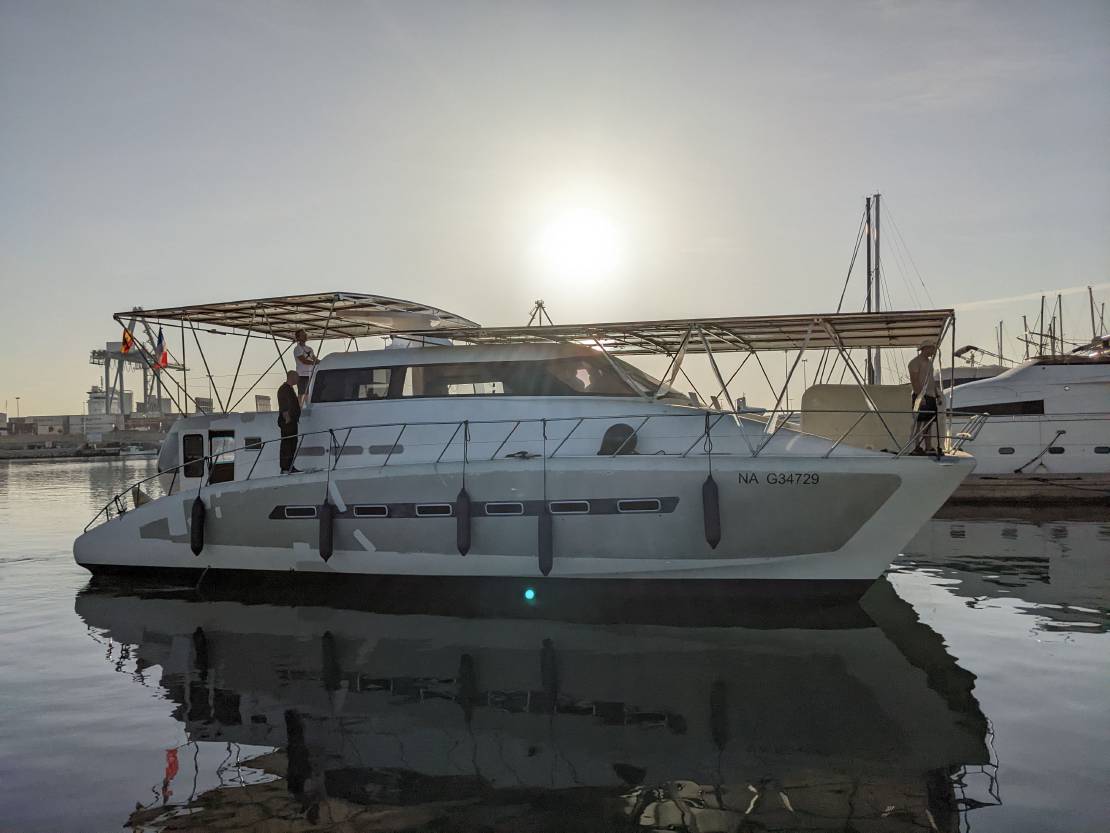
Second Sea Trial
The eagerly awaited date of the launch in the Bay of Alicante is finally here. The goals are to check that the new FIMEA N80L motors are working as …
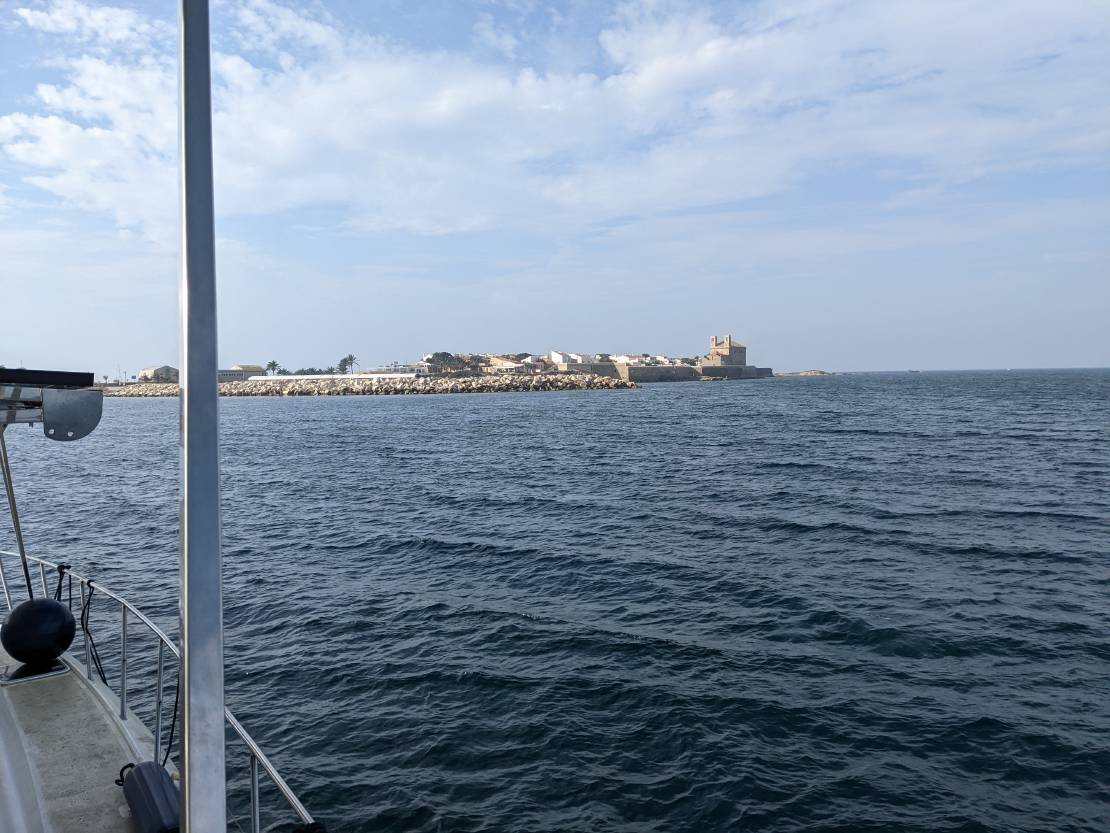
Until today, the Escargot had only been out to sea for trial navigations near the port of Alicante. This morning, we set sail for Tabarca, a small island 10 nautical miles south of Alicante, off the coast near Santa Pola.
A cheerful crew is accompanying us: Tonton Benoît (“the strongest and most handsome”, Ludivine’s brother) and his two daughters, Léa and Cassie, are with us for this first adventure. We also have Alex with us, our captain for the Escargot sea trials.
This navigation is the opportunity to test the rudder’s hydraulic control over a few hours of navigation as well as the anchoring equipment when arriving in Tabarca.
We cast off at 8:45 am.
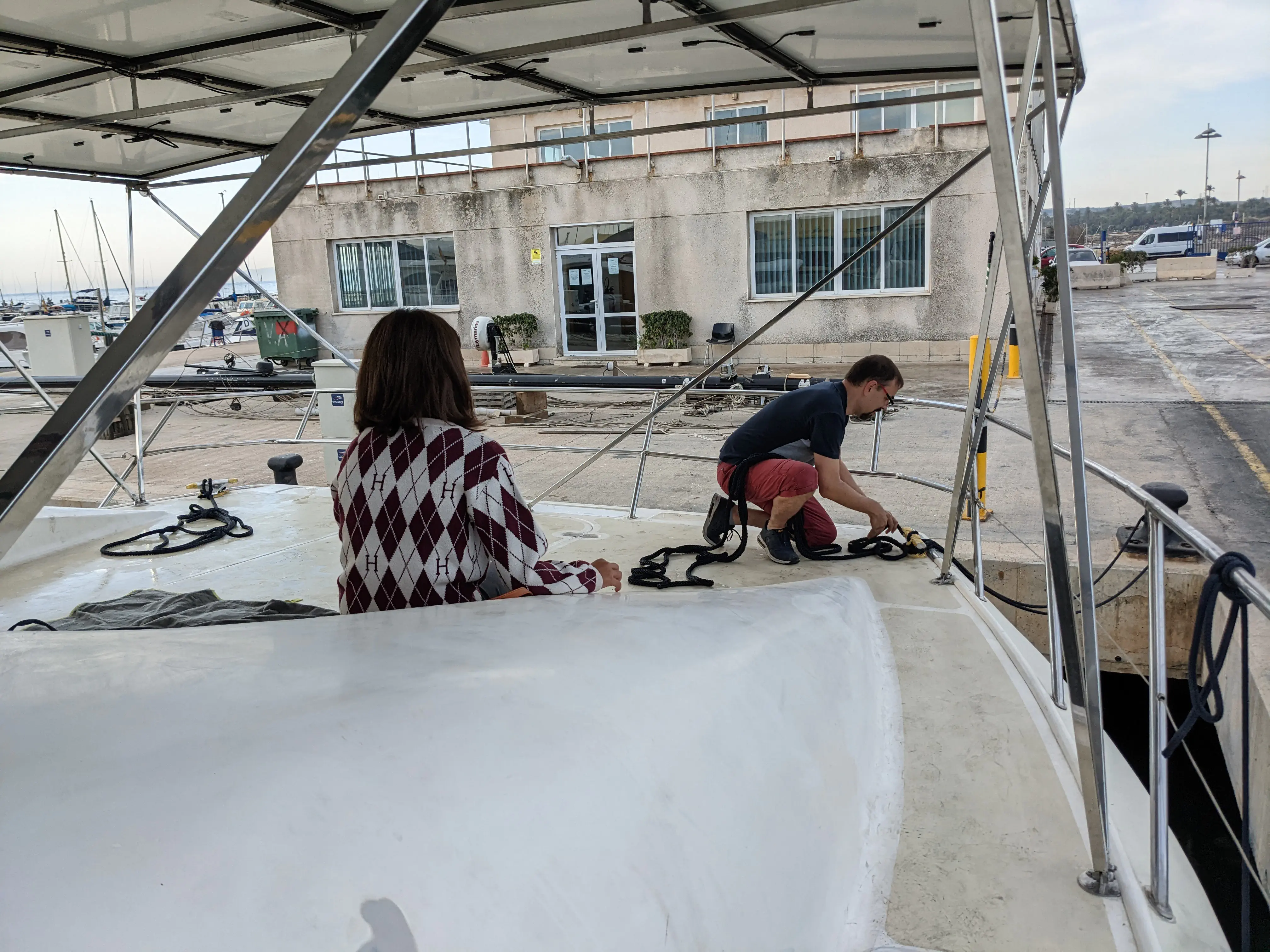
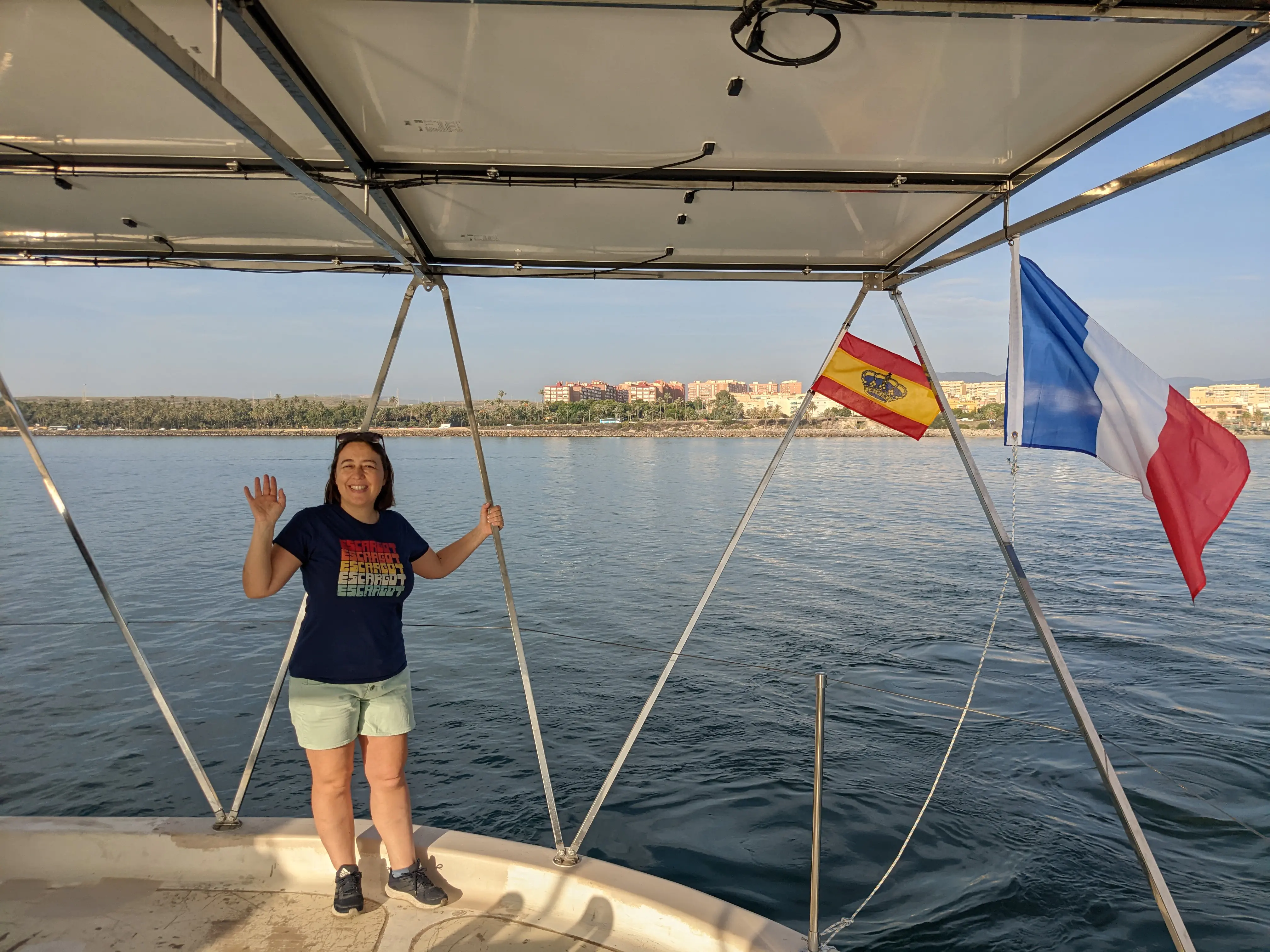
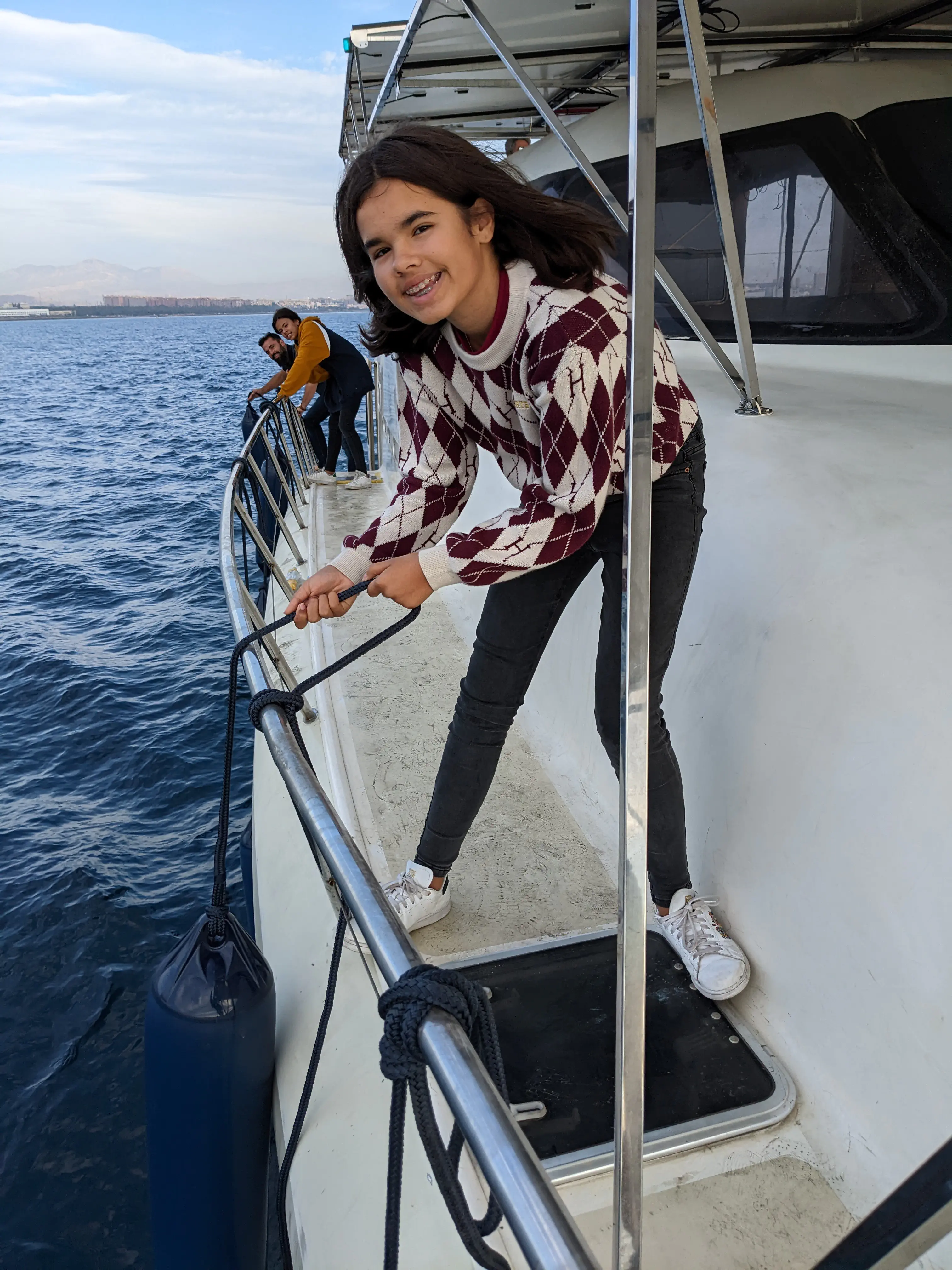
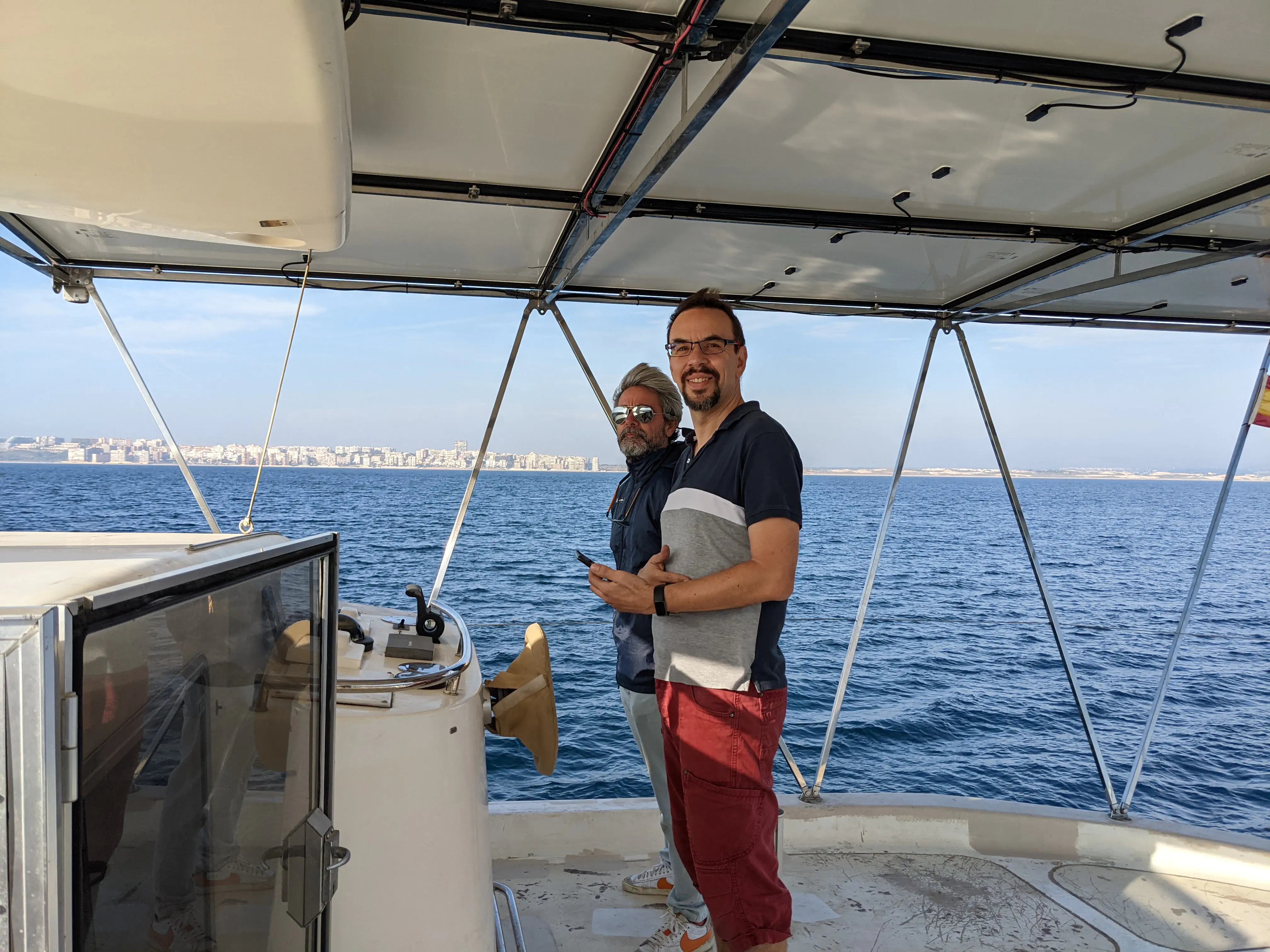
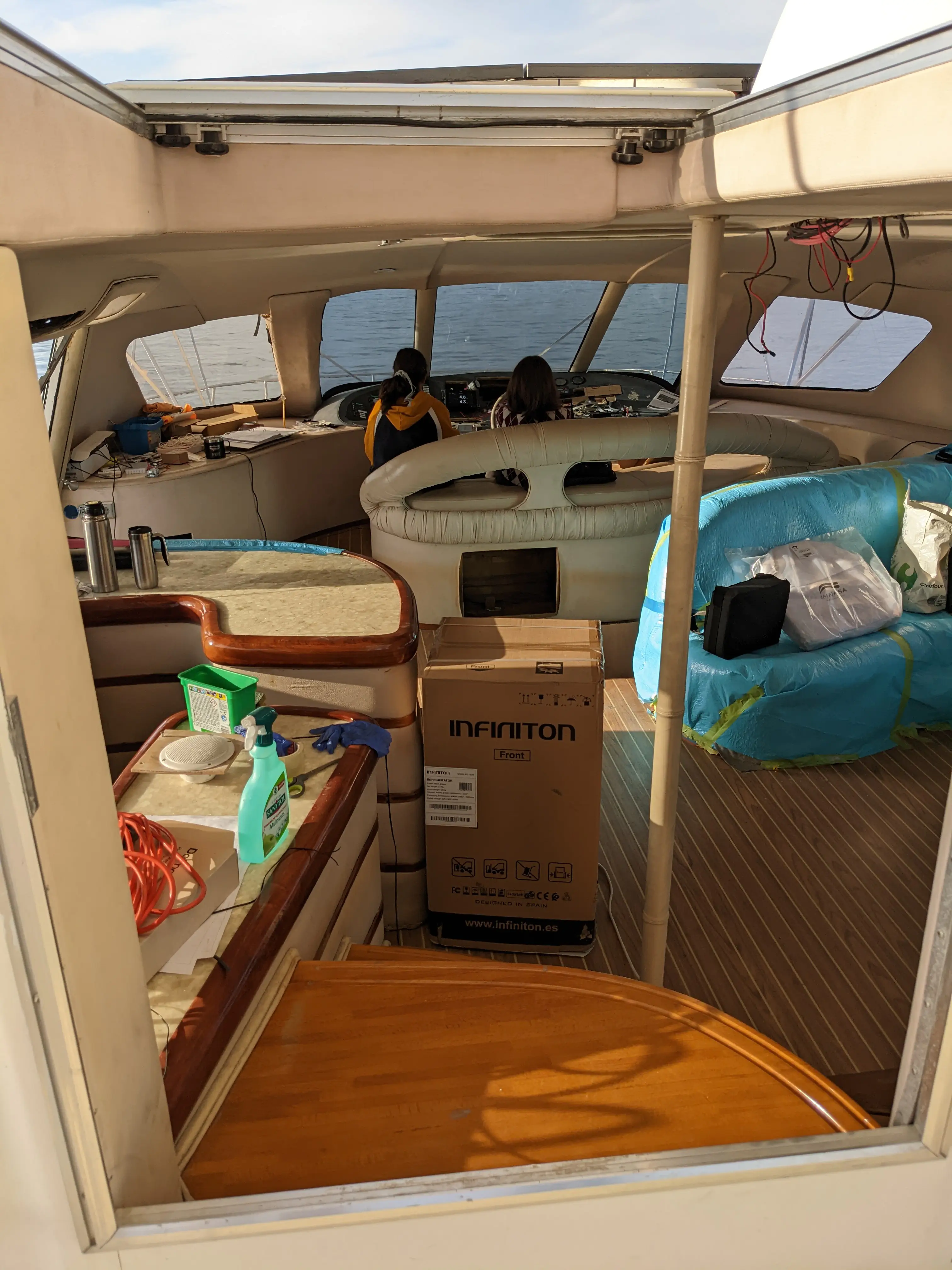
Tonton Benoit is a Chef (a real one) and he prepared us 5 stars sandwiches and a gourmet salad, on the counter top of the Escargot bar (the “Barracuda”) with a panoramic view of the sea. We notice in the distance behind him a speedboat heading towards us…!
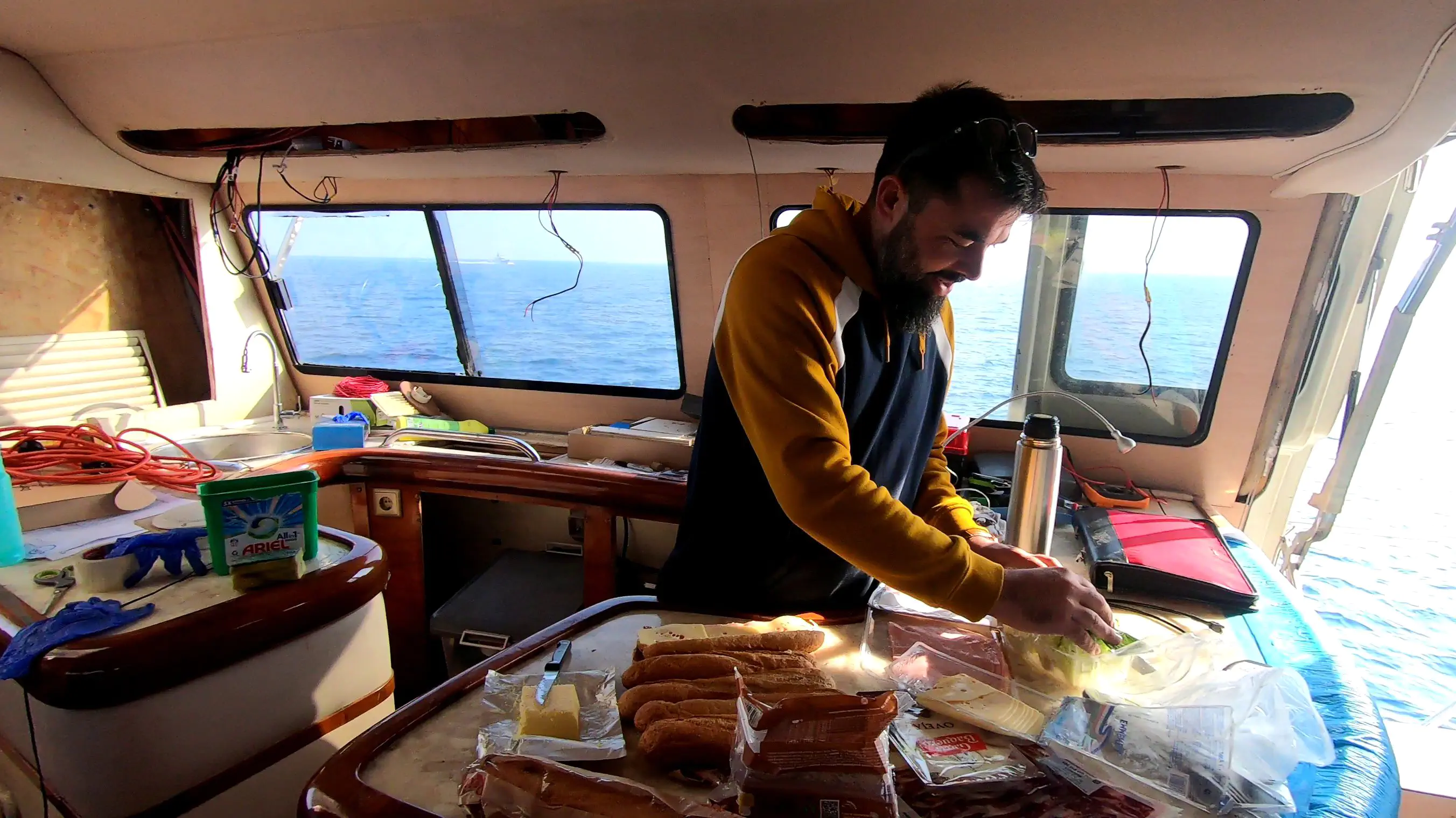
It is the Spanish Coast Guards (Guardia Civil) who give us a close-up visit. The Escargot only has her French navigation flag and registration number on the hull to identify her. They come up close to see what this motor catamaran, moving at only 6 knots and carrying a strange superstructure, is. I can already imagine them boarding us for an inspection of the boat’s papers, safety equipment, etc. but nope, after a minute of observation, they push the throttle again and set off at more than 15 knots.
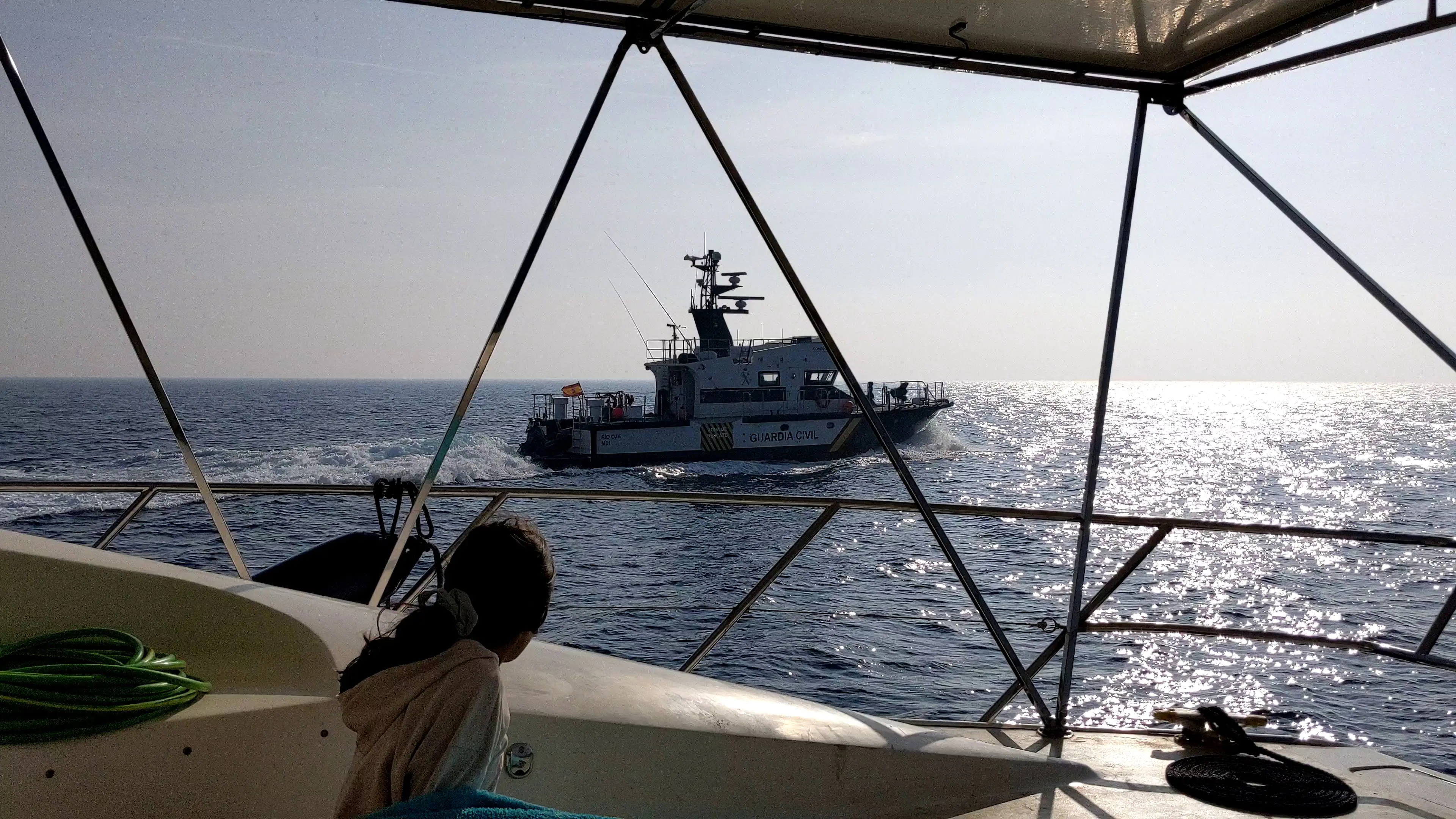
I take several measurements during this navigation. Here, I check the rotation speed of the starboard propeller shaft. 12.1 Hz, or 726 RPM, with a power consumption of 8.9 kW.
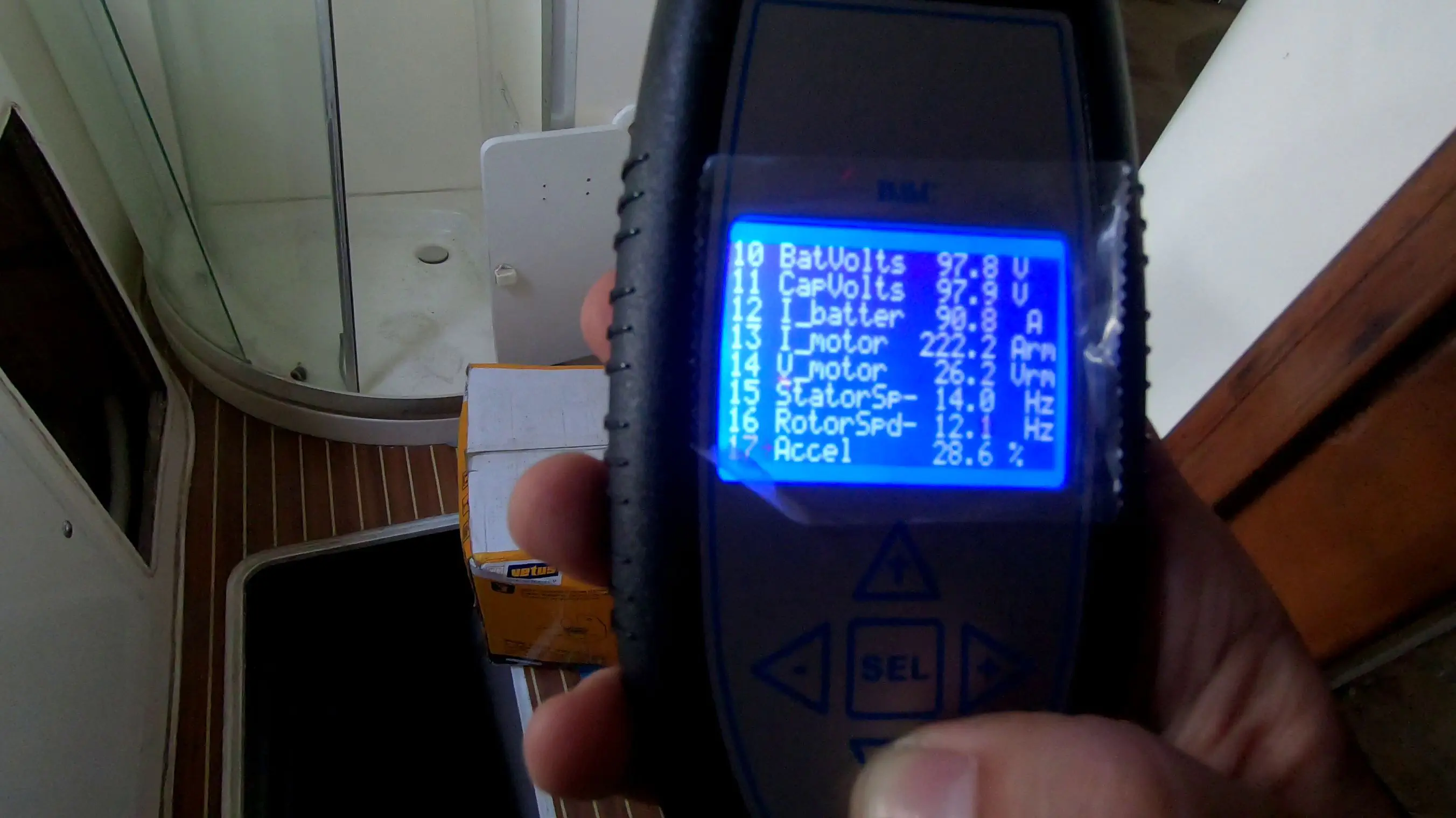
At 11:00, we drop anchor, with 3.5 meters under the hull (a bit over 4.5 meters of water). We repeat the anchoring maneuver twice, because the anchor does not hold on the first attempt.
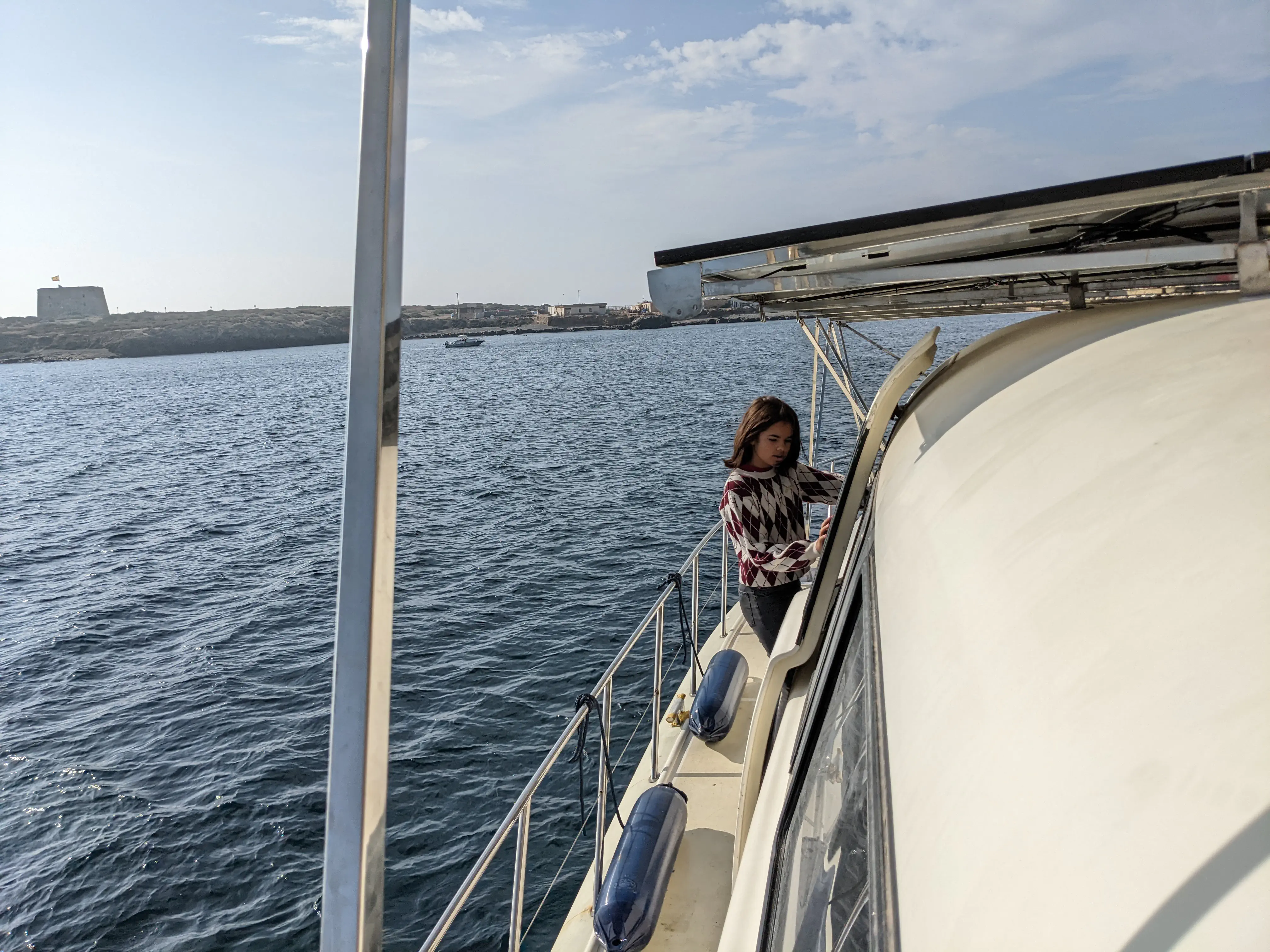
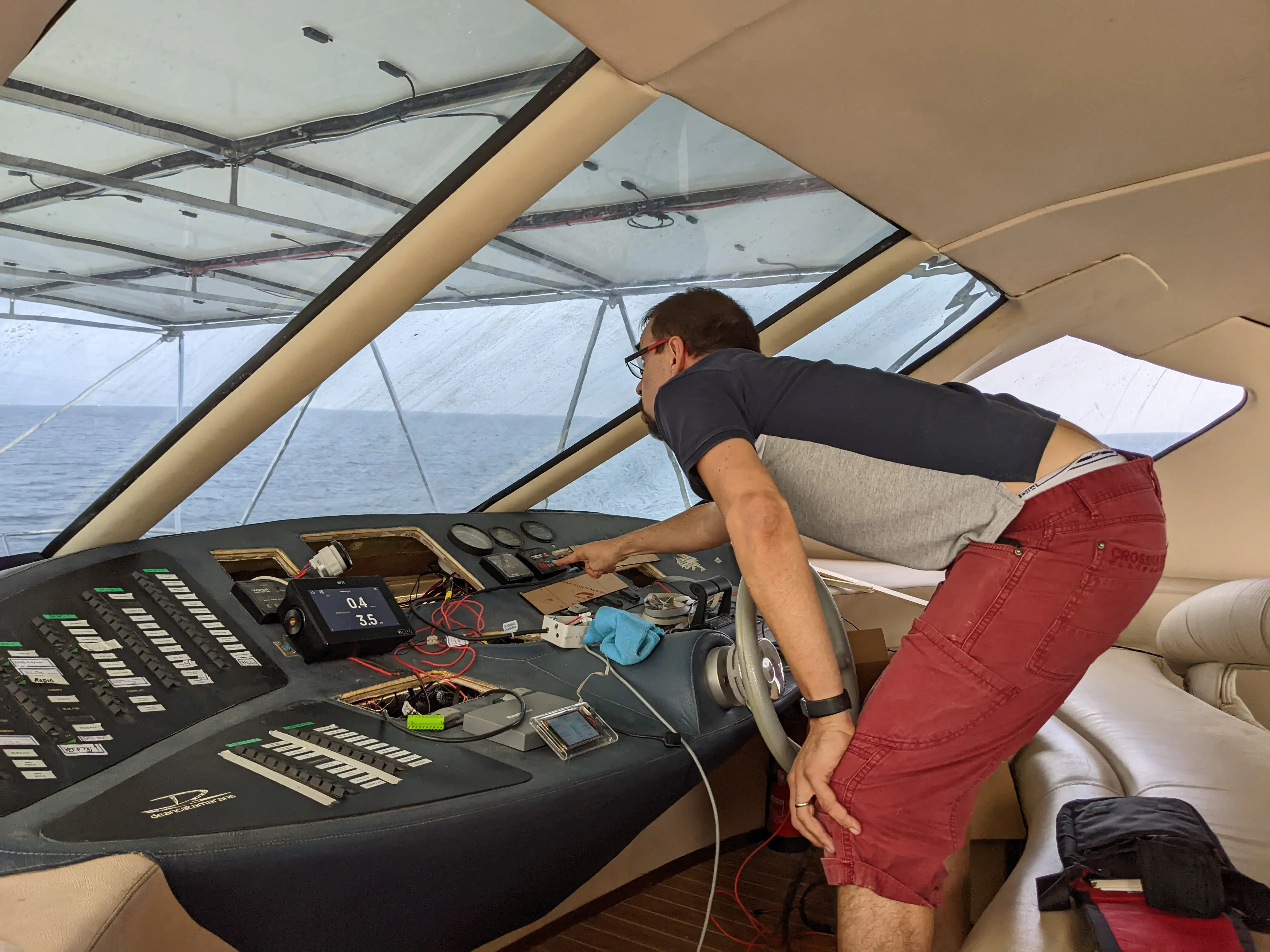
Then it’s time for swimming…
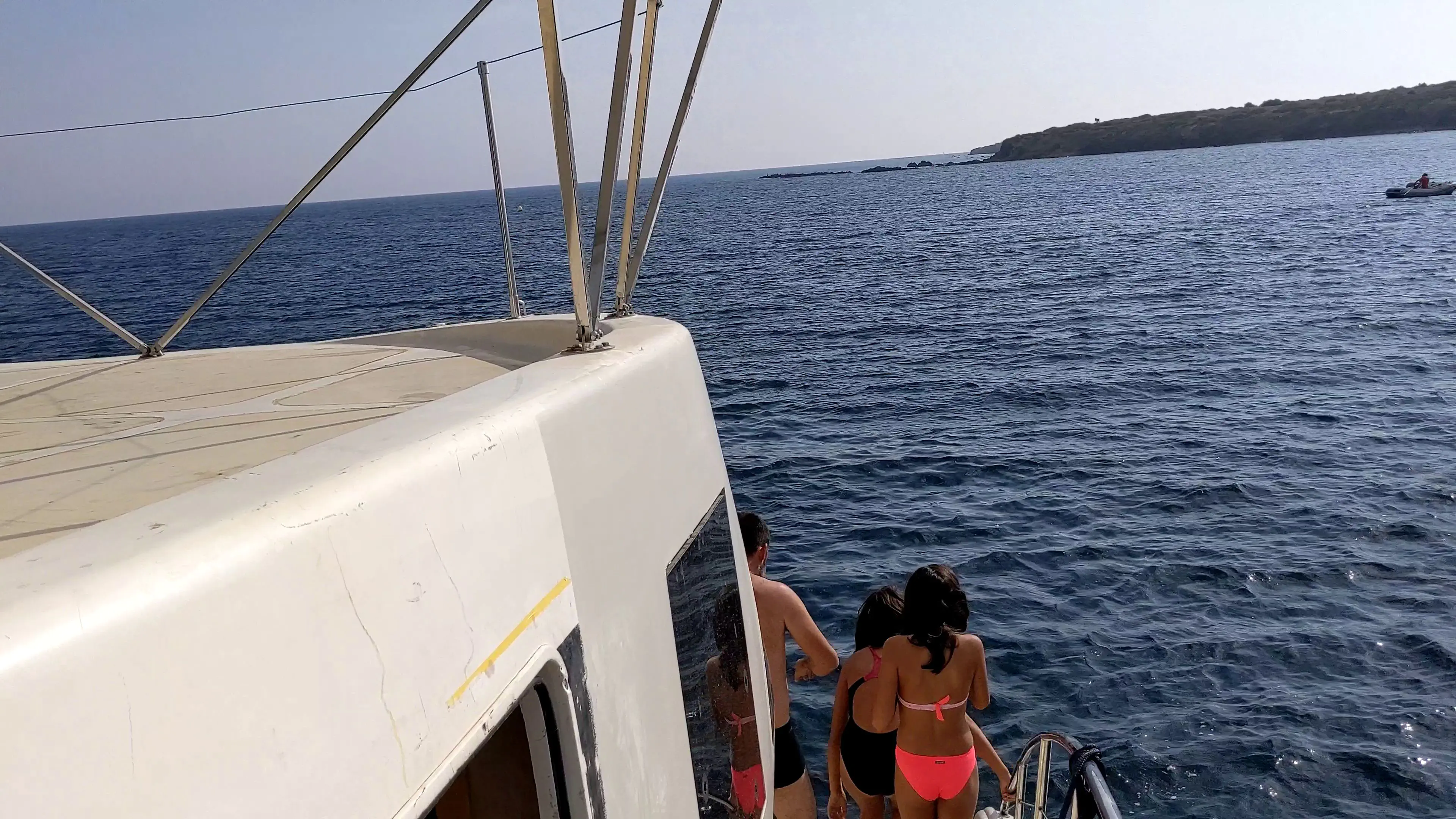
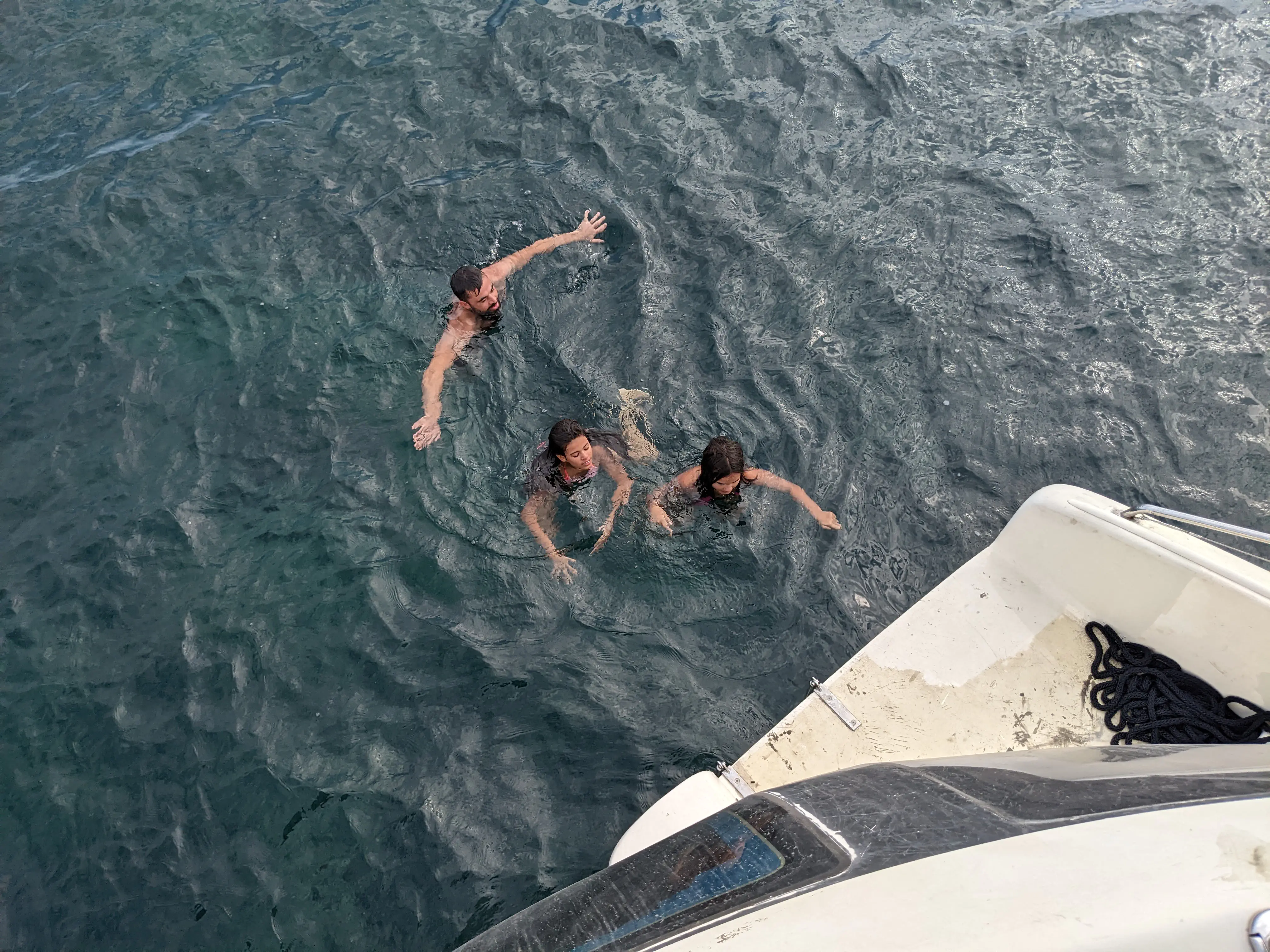
On the way back, the sun shines above us. We sail between 6 and 7 knots. In this photo, we can see the speed of 6.6 knots with a net consumption of 17 kW, while we have 3 or 4 kW of solar generation, so a consumption of about 10 kW per engine.
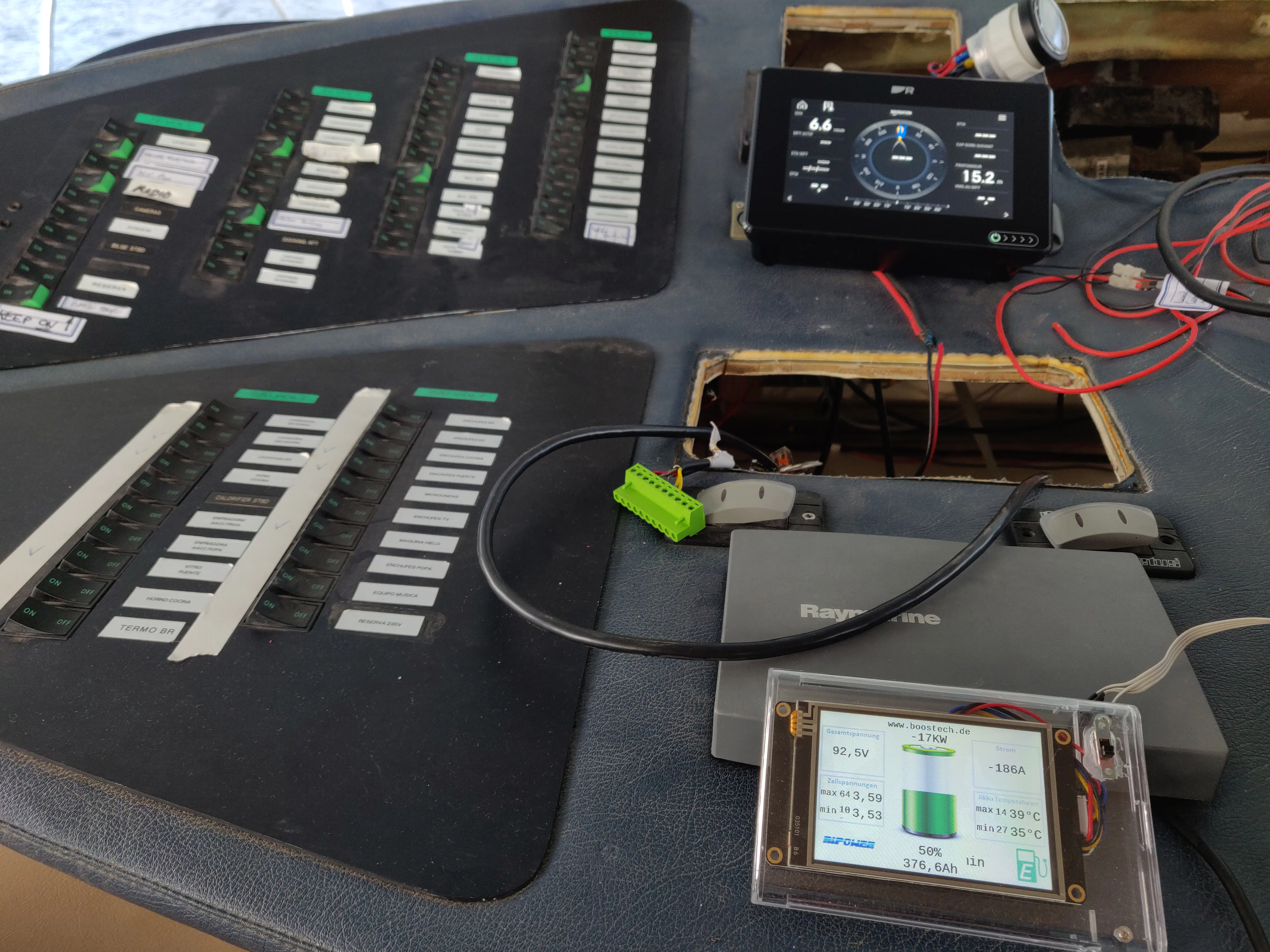
Time for more monitoring, this time on the port motor controller, running at 14.1 Hz, or 846 RPM, with a power consumption of 15.7 kW at this instant.
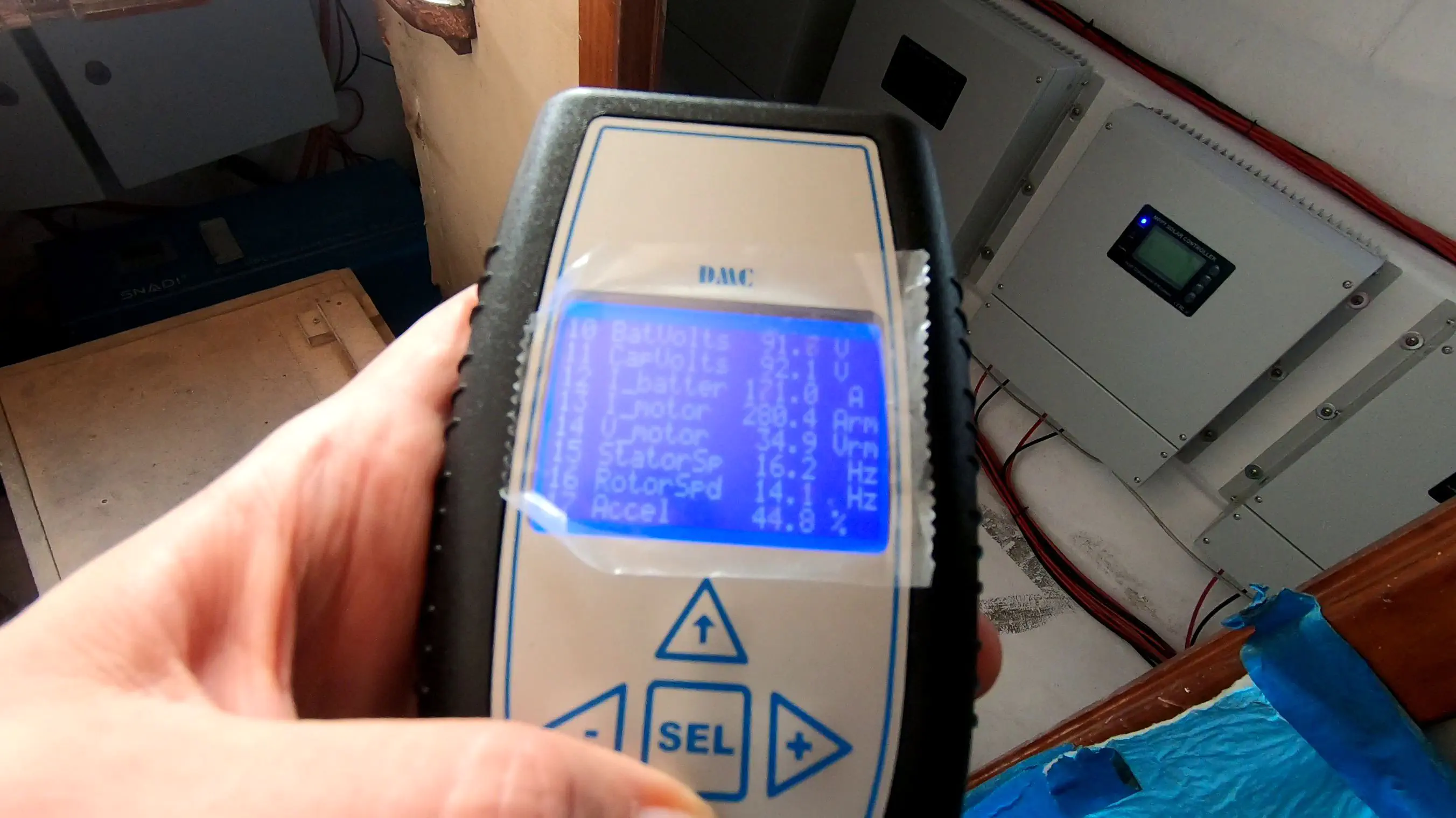
At 1:20 pm, we are back at our location in the Varadero STA port of Alicante. The battery management system indicates 32% of charge remaining and displays the low battery alert message with a regular beep sound. This corresponds to what we had estimated: 20 nautical miles at an average speed of 6 knots, that’s 3.33 hours of navigation. At 6 knots we consume about 20 kW and taking into account that we generated about 15 kWh of solar energy, this gives us a net consumption of a little more than 50 kWh. On a 72 kWh battery, this leaves us with a good 31% remaining on the way back.
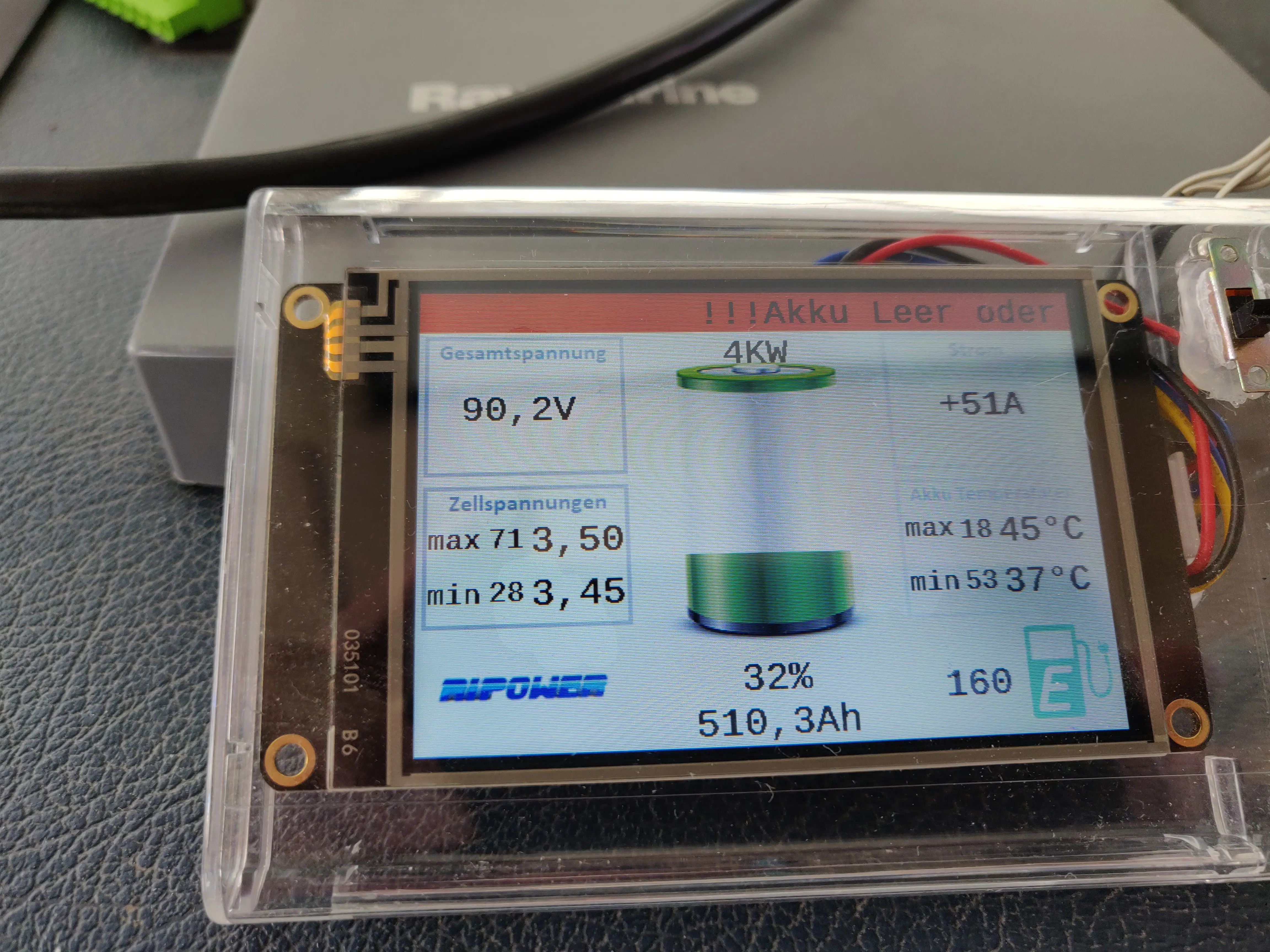
What a wonderful first adventure aboard our ship!
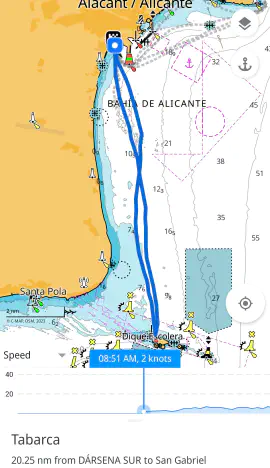

The eagerly awaited date of the launch in the Bay of Alicante is finally here. The goals are to check that the new FIMEA N80L motors are working as …
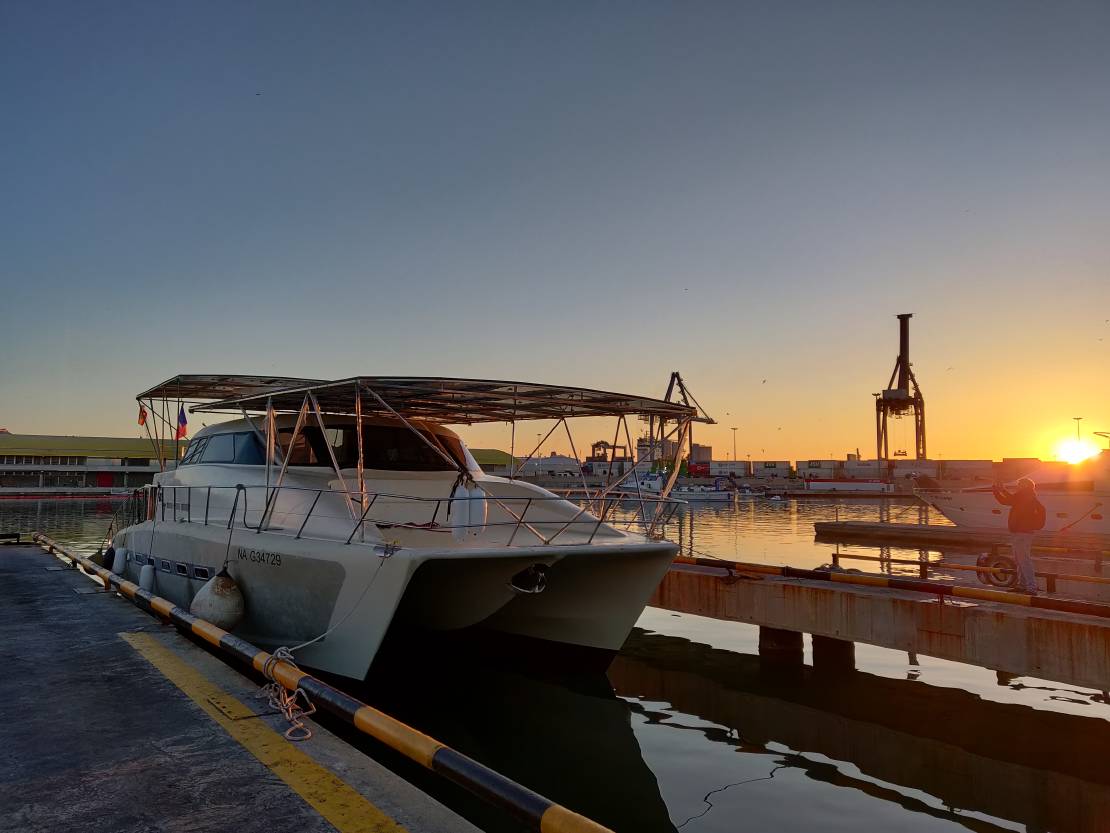
Back when we acquired the wreck of the Jag 530 in November 2020, we hoped to refit it and start sea trials in the summer of 2021. So it is well …